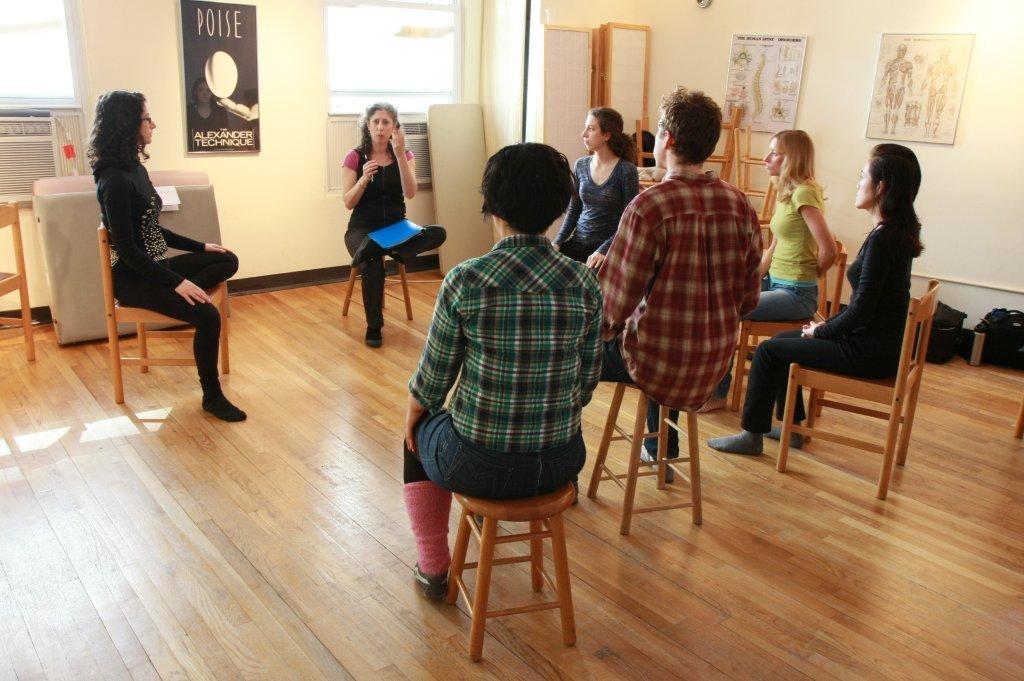by Karen G. Krueger
One common side effect of Alexander Technique lessons is a need to change furniture. After a course of lessons, a lot of chairs that once seemed adequate or even comfortable start to be very annoying. No chair can make you sit well, but a bad one can make it impossible to do so.
I have come to believe the same thing about shoes.
You’re no doubt familiar with the still-controversial barefoot running movement. You may even run barefoot or in “barefoot” or “minimalist” shoes. But have you thought about the effects of the shoes you wear daily, and the shoes you have worn throughout your life, on the shape and functioning of your feet?
In this and subsequent blog posts, I will invite you to consider whether what you wear on your feet is helping or hurting you, and I’ll provide resources for further exploration.
Let’s start by taking a good look at some basic shapes. Here are the feet of a typical newborn baby:
Baby Foot
And here are is a pair of adult feet that have not habitually worn shoes.
This adult did not wear shoes regularly
This is the natural human foot: shaped like a triangle widest at the toes. Each toe aligns with its metatarsal, and the metatarsals and toes spread out like a fan.
Does it surprise you to see the adult foot? Have you ever considered how a baby’s little triangles turn into the foot shape we think of as normal — widest at the balls, with toes pressed together and towards the midline? This striking photo suggests an answer:
The foot pictured below is that of an adult who had never worn shoes on the left; on the right, that of a boy who had worn shoes for a few months. (Source: Conclusions Drawn From a Comparative Study of Barefoot and Shoe-Wearing Peoples, The Journal of Bone & Joint Surgery. 1905; s2-3:105-136.)
Left: never wore shoes; Right: wore shoes for a few month
Now look at the shape of couple of major-brand running shoes (looking at the bottom of the soles):
Running Shoe
Running Shoe, 2
Note that both are shaped nothing like a natural human foot. Rather than spreading out to the toes, each shoe gets narrower from the ball to the tips of the toes. And these are shoes intended for athletic activity! Dress shoes, whether for men or women, are typically even pointier at the toes.
How can it make sense to run and walk in shoes that compress the toes into a wedge shape, instead of allowing them to spread out? What is the long-term effect of immobilizing the toes in this position for hours at a time?
In my next post, I’ll look at some of the other features of conventional shoes that are at war with the natural shape and functioning of the human foot, and talk about the resulting deformation and de-conditioning they cause.
In the meantime, try going completely barefoot for at least a little time every day — really barefoot, not even with socks on. Spread your toes, rub and manipulate them with your hands, find out what it feels like to have them actively engaged on the ground as you stand and walk. If you are like me, you will find it very enjoyable.
This is the first of three posts about what I have learned from my experiences exploring the approach to foot health pioneered by sports podiatrist Dr. Ray McClanahan. For a wealth of relevant articles and videos, see:
1. Foot Help
2. Natural Foot Gear (Click on the “Learn” tab)
3. Youtube channel of Northwest Foot & Ankle
And for a broader perspective on movement that embraces bare-footing and natural foot care, see Katy Bowman’s website nutritiousmovement.com.
KAREN G. KRUEGER became a teacher of the Alexander Technique after 25 years of practicing law at two major New York law firms, receiving her teaching certificate from the American Center for the Alexander Technique in December 2010. Her students include lawyers, business executives, IT professionals and others interested in living with greater ease and skill. Find her at her website.








 by Brooke Lieb, ACAT Training Director
ACAT’s Teacher Certification Program follows a developmental curriculum, which has been refined over the last 49 years. Our program is designed so that our graduates are prepared, and more importantly, are confident about their ability to teach, by the time they receive their teaching certification.
by Brooke Lieb, ACAT Training Director
ACAT’s Teacher Certification Program follows a developmental curriculum, which has been refined over the last 49 years. Our program is designed so that our graduates are prepared, and more importantly, are confident about their ability to teach, by the time they receive their teaching certification. by Karen Krueger
I've been reading a lot lately about "vocal fry," a speaking mannerism that some people find extremely annoying and others defend as an innovative trend among influential young women. Vocal fry is a gravelly or creaky sound to the voice that is most clearly heard at the ends of words and phrases. Some people call it "the NPR voice." Others trace it to Kim Kardashian.
by Karen Krueger
I've been reading a lot lately about "vocal fry," a speaking mannerism that some people find extremely annoying and others defend as an innovative trend among influential young women. Vocal fry is a gravelly or creaky sound to the voice that is most clearly heard at the ends of words and phrases. Some people call it "the NPR voice." Others trace it to Kim Kardashian.